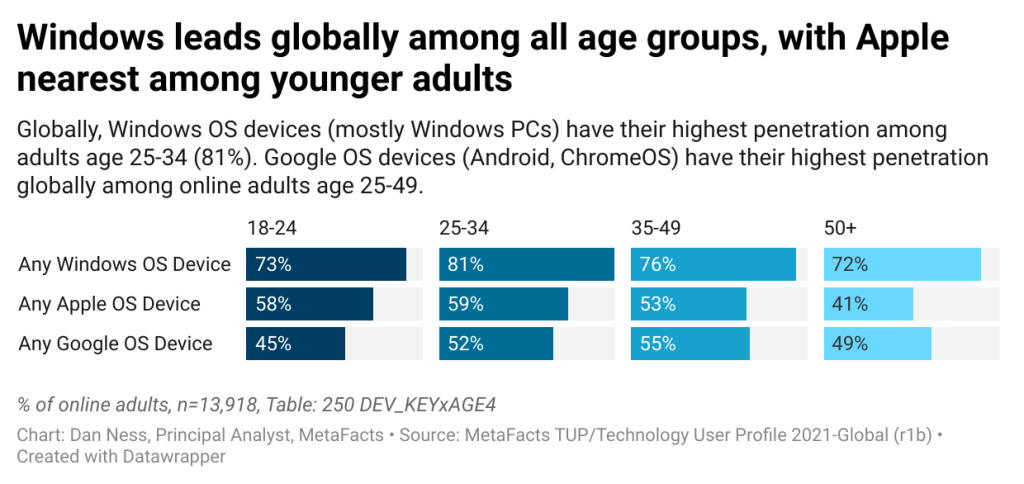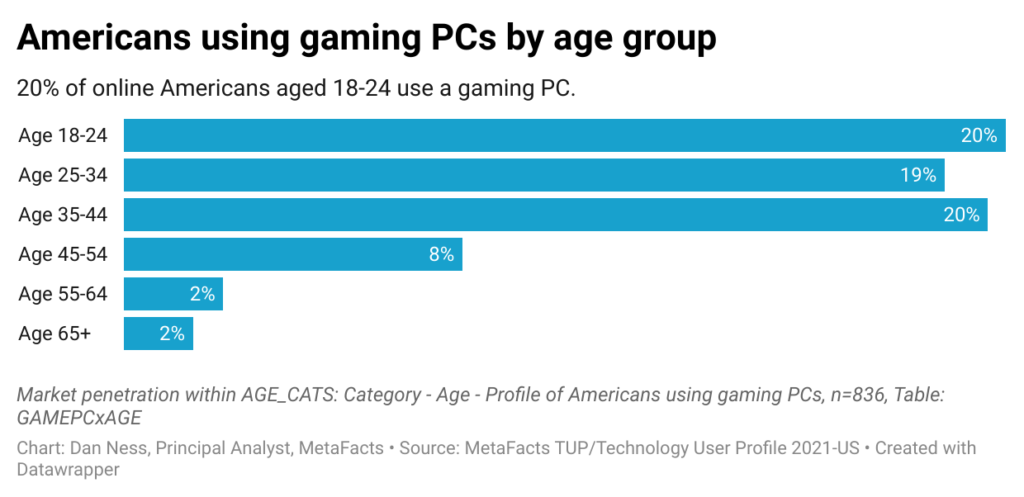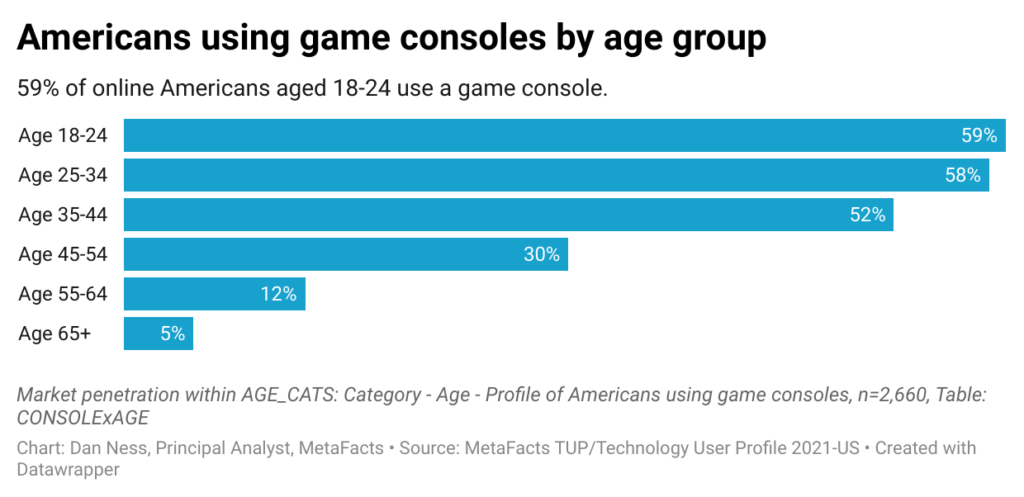Smartphones have rapidly, although not completely, replaced feature phones. Smartphone users have expanded their range of activities with new uses while also increasingly migrating activities from computers and tablets. This TUP Highlights Report profiles smartphones – their market penetration, user demographic profile, regular activities, usage profile, key competitors, and purchase plans.
This TUP Highlights report includes the following sections: penetration of smartphones versus feature phones, smartphone brand share, top activities for smartphones, smartphone carrier share, smartphone usage profile, trends in technology ecosystems, major activities for a market segment, and the profile of smartphone users.
Virtual reality headset use among socioeconomic groups
VR headsets have received recent attention again after more than a decade of on-again/off-again experimentation with limited market acceptance. While the overall penetration rate of actively-used VR headsets has reached 5% for the first time in 2021, usage rates vary considerably across socioeconomic groups. Having the means to acquire all that’s needed to fully enjoy VR headsets isn’t the only factor affecting adoption as even some upper-income groups are only nominally further ahead than other less advantaged groups. The groups being reported consider age group, employment status, household size, ethnicity, presence of children, educational attainment, and other socioeconomic factors.
User profile by operating system ecosystem
Dan Ness, Principal Analyst, MetaFacts, October 13, 2021
Apple for youngest adults and Windows for the middle
- Windows has the broadest overall market penetration of any OS family
- Globally, Windows is strongest among adults who are employed, in larger households, working from home, and neither the oldest nor youngest
- Apple OS devices have their strongest market penetration among younger adults, especially those employed and working from home
- Apple’s global market penetration is supported in three ways: iPhones, Macs, and iPads
- The global penetration of Google OS devices is primarily supported by Android smartphones.

User profile by technology ecosystem
The major technology ecosystems have each captured different market segments. This TUP MetaFAQs report details the current market penetration of Windows, Apple OS devices, and Google OS devices by age group, and work-from-home status within the US and across the US, UK, Germany, and Japan.
Samsung user profile [MetaFAQs]
Samsung’s share of the installed base varies by country and within user age groups. This MetaFAQs reports on Samsung’s share by country, age group, and employment status.
Profile of Americans using gaming PCs
Dan Ness, Principal Analyst, MetaFacts, October 9, 2021
Profile of Americans using gaming PCs
- All online American adults who regularly use a gaming PC
- They number 25.3 million – 12% of all online American adults
- Defined as using a “Gaming desktop or gaming notebook – designed for playing video games, such as with special video cards and extra memory”
- Profiled by characteristics that are distinctive
- Only profiled by those characteristics which have an index of 80 or below and 120 and above – those which are 20% above or below the average by category
- Expressed as market penetration – the percentage of online adults within each group
- Distinctive characteristics profiles
- Age, gender, age within gender
- Employment status
- Presence of children
- Household size
- Life stage (age, employment status, presence of children)
- Number of home PCs used
- Technology ecosystems
- Characteristics examined and not found to be distinct
- Educational attainment
Americans who regularly use a gaming PC by age group
- Gaming PC users skew younger
- Game console use is strongest among the youngest American adults – aged 18-44
- Penetration among online Americans aged 18-44 is 19%-20%
- Beyond age 45, the rate drops steeply

Technology ecosystem device penetration by country, age, and employment status
One measure of an ecosystem’s breadth is its market penetration. This MetaFAQs splits out the percentage of online adults using major OS families and form factors – such as Windows PCs and iPhones – by country and by age and employment status.
Home printer use among socioeconomic groups
Among socioeconomically advantaged groups of American online adults, the use of home printers has grown between 2018 and 2021. Nationwide, however, and especially among disadvantaged groups, home printer use has declined. This MetaFAQs reports on the active use of home printers by American socioeconomic groups. The groups being reported consider age group, employment status, household size, ethnicity, presence of children, educational attainment, and other socioeconomic factors.
Top activities across platforms [TUPdate]
There are certain activities that transcend form factors, such that they are popular with every type. This TUPdate identifies regular activities that are high on the list for smartphones, PCs, and tablets, those popular on two of the three, or unique to one type.
Profile of American game console users
Dan Ness, Principal Analyst, MetaFacts, October 2, 2021
Profile of American game console users
- All online American adults who regularly use a game console
- They number 77 million – 35% of all online American adults
- Profiled by characteristics that are distinctive
- Only profiled by those characteristics which have an index of 80 or below and 120 and above – those which are 20% above or below the average by category
- Expressed as market penetration – the percentage of online adults within each group
- Distinctive characteristics profiles
- Age, age within gender
- Employment status
- Presence of children
- Household size
- Life stage (age, employment status, presence of children)
- Number of home PCs used
- Technology ecosystems
- Characteristics examined and not found to be distinct
- Educational attainment
Americans who regularly use a game console by age group
- Game console users skew younger
- Game console use is strongest among the youngest American adults
- Penetration among online Americans aged 18-34 is 58%-59%
- Beyond age 45, the rate drops steeply


